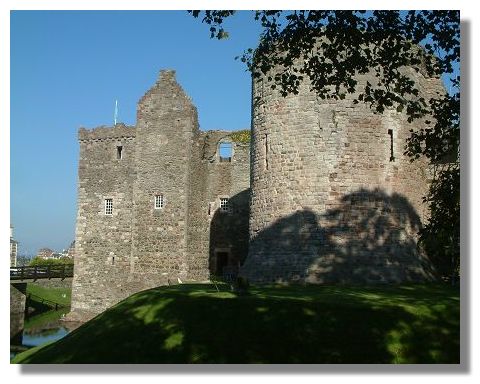
Scottish Castles Photo Library
- Rothesay Castle, Isle of Bute

From around the 8th century, the western isles of Scotland were part of the kingdom of the Norwegian Vikings. But by the 12th century the Scots were pushing them back. In 1230 King Hakon of Norway sent a force to Bute to retake it - and were confronted by the Scots in a castle overlooking Rothesay Bay.
Walter FitzAlan was King David's high steward, an influential post and the family was rewarded with estates in Scotland - including the Isle of Bute and the title of Duke of Rothesay. The role and title became a hereditary one and when the High Steward later founded the Stewart line of kings, the title was passed down to the heir to the throne. One of Prince Charles' many titles is currently Duke of Rothesay.
In 1650, Oliver Cromwell marched into Scotland and left an occupying force, including one at Rothesay Castle. When they left, they may have demolished part of the defences. When Archibald, the 9th Earl of Argyll led a short-lived revolt in support of King James VII, he attacked and plundered Rothesay Castle. It became uninhabitable and the Keeper, Sir James Stewart moved across the High Street to Mansion House.
Rothesay Castle is unusual in Scotland in being built to a mainly circular plan form. The earliest stonework dates from around 1200AD. Over the years, four large turrets were constructed and the rectangular gatehouse, facing north towards the sea, with its apartments above, became the main residential area of the castle. The gatehouse was the main access to the castle, reached by a bridge across the moat (see on the left of the illustration).
See also Places to Visit - Rothesay Castle for more information and illustrations.
Return to the Castles Photo Library Index
or go to the next castle:  Scotstarvit Tower.
Scotstarvit Tower.
Where else would you like to go in Scotland?
Where else would you like to go in Scotland?

